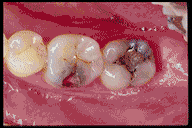Revolutionizing Dentistry: The Power of Teeth Bonding
Introduction
Teeth bonding has emerged as a cornerstone in modern restorative and cosmetic dentistry. Over the past three decades, advancements in bonding agents have revolutionized how dentists restore and enhance teeth. Unlike conventional restorations that require extensive tooth reduction for mechanical retention, bonded restorations provide strength, durability, and aesthetic appeal while preserving the natural tooth structure. This essay explores the evolution, science, and clinical applications of teeth bonding, emphasizing its transformative impact on dental care.
The Evolution of Bonding Agents
In the past, dental restorations relied heavily on mechanical retention, which necessitated substantial removal of tooth material. However, the introduction of bonding agents has eliminated the need for such invasive procedures.
Enamel Bonding
Developed in the 1980s, enamel bonding was the first breakthrough in this field. It uses acidic gels to create a retentive surface pattern by etching the crystalline enamel structure. This allowed dental materials to adhere securely to the enamel, paving the way for stronger and more durable restorations.
Dentin Bonding
While enamel bonding depends on retentive patterns, dentin bonding presents a unique set of challenges. Dentin, unlike enamel, has a complex composition of approximately 70% hydroxyapatite, 20% organic matrix (mostly collagen), and 10% water. Additionally, it contains dentinal tubules and extracellular proteins, making it less conducive to bonding compared to enamel. However, advancements in bonding agents have made it possible to form a stable interface between restorative materials and dentin.
The Science Behind Bonding
Dentin bonding involves the creation of a hybrid layer, a thin resin-reinforced layer that bonds the restorative material to the tooth’s surface. The process begins with acid etching, which opens dentinal tubules and exposes collagen fibers. This allows hydrophilic resins to infiltrate the collagen network, forming a molecular-level connection between the natural tooth and the artificial material. The hybrid layer provides:
Sealing: Prevents leakage and protects the tooth from acid attacks.
Strength: Enhances the fracture resistance of the restored tooth.
Durability: Increases the lifespan of restorations by improving stress distribution.
Clinical Applications
Teeth bonding procedures are versatile, benefiting both restorative and cosmetic dentistry. Key applications include:
Restorative Dentistry
Fillings: Bonding agents enable strong adhesion of composite resin to the tooth surface, making fillings less invasive and more aesthetically pleasing.
Crowns and Bridges: Porcelain restorations can be securely bonded without extensive tooth reduction, ensuring durability and natural appearance.
Fracture Resistance: Teeth restored with bonded materials are more resistant to fractures than even healthy, intact teeth.
Cosmetic Dentistry
Smile Design: Bonding allows dentists to reshape, resize, and whiten teeth, creating a harmonious and natural smile.
Veneers: Porcelain veneers are bonded to the enamel, masking discolorations, and correcting minor misalignments.
Repairing Damage: Chipped or cracked teeth can be restored seamlessly with composite bonding.
Procedure and Technique
The success of teeth bonding depends on meticulous preparation and application. The process includes:
Preparation: The tooth is cleaned and conditioned to remove debris and ensure an optimal surface for bonding.
Etching: Acidic gels create a penetrable collagen-fibril network in the dentin, allowing resin infiltration.
Application of Primer: Hydrophilic methacrylate monomers are applied to form the hybrid layer, enhancing adhesion and protecting against bacterial acid attacks.
Placement of Restorative Material: Composite resin or porcelain is applied and sculpted to match the tooth’s natural contours.
Curing: A curing light hardens the material, completing the restoration.
Advantages of Teeth Bonding
Teeth bonding offers numerous benefits over traditional dental procedures:
Minimally Invasive: Preserves natural tooth structure by eliminating the need for extensive reduction.
Aesthetic Appeal: Restorations blend seamlessly with the natural teeth.
Enhanced Strength: Bonded restorations withstand high pressure and tension without breaking.
Long-Term Durability: Properly bonded restorations have a high survival rate, even under challenging conditions.
Versatility: Applicable to a wide range of dental issues, from minor repairs to complete smile makeovers.
Challenges and Considerations
While bonding has many advantages, it requires precision and expertise. Factors influencing the success of bonding include:
Moisture Control: Even slight contamination during the bonding process can compromise adhesion.
Material Selection: Choosing the appropriate bonding agent and restorative material is critical.
Patient-Specific Factors: The quality of enamel and dentin, as well as the patient’s oral hygiene, can affect outcomes.
Conclusion
Teeth bonding represents a significant advancement in dental care, combining science and artistry to restore and enhance smiles. By preserving natural tooth structure and providing durable, aesthetic solutions, bonding has become an essential tool in both restorative and cosmetic dentistry. Whether addressing minor imperfections or complex restorations, bonding offers patients a minimally invasive pathway to strong, beautiful teeth. As the technology continues to evolve, the future of teeth bonding promises even greater possibilities for improving dental health and aesthetics.
References:
Butler WT. Dentin extracellular matrix (ECM) proteins: comparison to bone ECM and contribution to dynamics of dentinogenesis. Connect Tissue Res 2003; 44: 171–178.
Schilke R. Comparison of the number and diameter of dentinal tubules in human and bovine dentine by scanning electron microscopic investigation. Arch Oral Biol 2000; 45: 355–361.
Goldberg M. Dentin: structure, composition and mineralization. Front Biosci (Elite Ed). 2011; 3: 7711-35.
Nakabayashi N. Hybrid Layer as a Dentin-Bonding Mechanism. Journal of Esthetic and Restorative Dentistry 1991, 3(4): 133-138.
All this allows to save a great amount of tooth structure. It is evident that this development does not just benefit cosmetic dentistry and smile design.
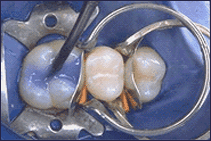
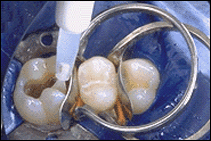
Bonding makes ''invisibly" strong!
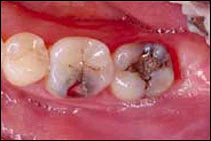
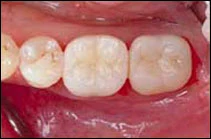
Animated bonding sequence
